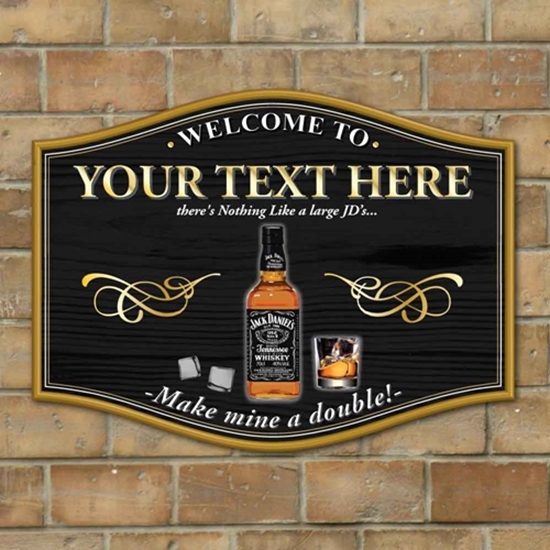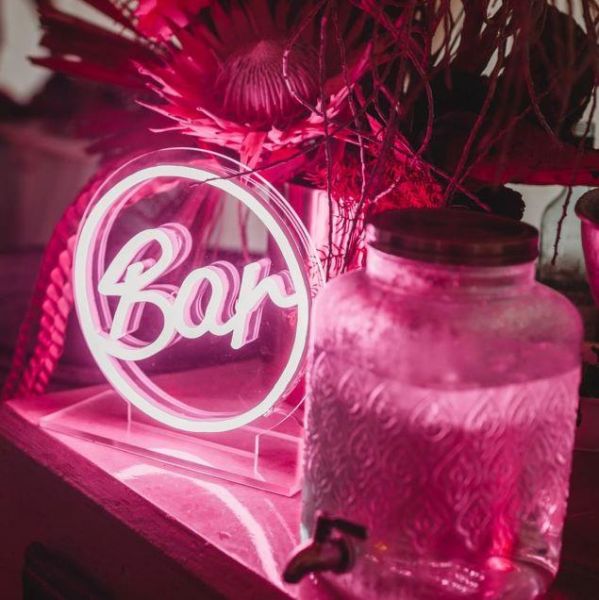New Suggestions For Selecting Window Vinyl Signs
New Suggestions For Selecting Window Vinyl Signs
Blog Article
What Are The Distinctions Between The Bar Sign And Their Various Uses?
The purpose of bar signs may differ significantly. The reason for bar signs differs for each. Branding
Goal is to establish and consolidate the bar's brand image.
Features: Include the logo, bar's name, and colors. The bar's design is meant to reflect the style and theme of the establishment.
Customized metal signs bearing the bar's name or a neon sign bearing its logo are some examples.
2. Information
The aim of this document is to offer important information to customers.
Features: Clear, clear text with easy-to understand information about the hours of operation, WiFI passwords Home rules, or restroom areas.
Signs that point to the restrooms or show hours of operations on walls at the entrances are examples.
3. There are also things to decorate your home on Decorative
The goal is to enhance the aesthetic appeal and ambience of the bar.
Features: The bar decor is usually more artistic or themed. The bar may or may not have any written text.
Examples: Old beer ads, quirky or humorous signs or themed artwork.
4. Promotional Materials
Goal: To advertise specific products or events.
Features: Design that's attractive, and emphasizes special promotions, upcoming events or menu items. They may also include seasonal or re-usable elements.
For example, chalkboards with daily specials, banners promoting happy hour, and posters advertising upcoming events.
5. Directional
Guide patrons in the bar.
Features: Clear arrows and directions to guide customers through the space, such as finding bathrooms, exits or various areas of the bar.
Examples: Signs that point to restrooms, "Exit" signs, directions arrows to different seating areas.
6. Regulatory/Compliance
Purpose: To comply with legal requirements and to ensure safety.
Features: Signs necessary for legal requirements. These include signs indicating areas where smoking is prohibited, occupancy limits and emergency exits.
Signs that prohibit smoking, limit occupancy, or warn of emergency exits are some examples.
7. Interactive
Goal: To connect with the client and create an experience that is engaging.
Features: Elements that encourage patron involvement, such a write-on surfaces or interactive digital elements.
For example, chalkboards for messages to customers or signs with QR code links to menus in digital format and social media.
8. Thematic
Goal: To create a certain style or atmosphere.
Highlights: Signs that are aligned with the theme of the bar contributing to the overall experience and the overall atmosphere.
Examples: Pirate-themed signage in a nautical bar and rustic wooden signs in an establishment themed on the country.
9. Menu
Show the menu of the bar.
Features: Lists beverages and foods clearly, usually with prices. Can be static, or can change.
Digital screens, for example, that rotate menus as well as wall-mounted menus for drinks.
Each type of bar has its own purpose and is constructed to fulfill that specific need. When they understand these distinctions, bar owners can select and position signs efficiently to enhance patrons' experiences and fulfill operational needs. Have a look at the top rated personalised pub signs for site examples including the staying inn sign, indoor bar signs, personalised cocktail sign, bespoke bar signs, pub signs personalised, signs for garden bar, pub signs personalised, pub signs personalised, signs for garden bar, pub bar signs for sale and more.
What Is The Difference Between Bar Signs In Terms Readability
Bar signs can be read differently depending on size, font as well as the contrast between color and light. This article will describe how each of these factors affects the readability of bar signs. Font Choice
Significance: The font is used to create the sign.
Utilize simple sans-serif fonts, such as Arial, Helvetica or serif fonts like Times New Roman.
Stylized Fonts: Decorative or script fonts are difficult to read, particularly at a distance or in low light.
Simple, legible fonts aid users quickly grasp the information.
2. Font Size
The sign's characteristics include the size of the text on the sign.
Large Fonts (large fonts) They are easier to read from the distance. They are ideal for exterior as well as primary signs.
Small fonts are ideal to create menus, signs or even tabletop signs.
Impact The font's size must be suitable for the distance at which it will be read. A larger font is easier to read from a distance.
3. Color Contrast
Specifications: the difference in the color of the text on the background.
High contrast: Text with a dark background or text that has an unlit background.
Low Contrast (Similar colors between text and the background) This may make it difficult to read text.
Effect: The high contrast increases reading ability, making the text stand out.
4. Lighting
The sign's illumination is among its primary features.
Well-Lit Signs: Front or back-lit signs improve visibility even in dim lighting conditions.
Signs with poor lighting or lack of adequate lighting may be difficult at nighttime to read, especially in dimly lighted areas.
Effect: Proper lighting ensures that the signs are always clear and visible, even in dim lighting conditions.
5. Material and Finish
The characteristics of the sign include material and the finish.
Matte Finish: Text becomes much easier to read, with less reflection and reflection and.
Glossy Finishes - Cause the appearance of glare when exposed to direct light that can make it hard to read.
The impact: Selecting the appropriate material will enhance readability because it minimizes glare.
6. Text Layout
The sign's characteristics include text arrangement on the sign.
Clear Hierarchy. Organise information with headings.
Cluttered layout: Signs can be difficult to understand if they are clutter-filled.
Impact: A clearly organized layout makes it easy for patrons to find and comprehend the information.
7. Viewing Distance
The sign's characteristics include the distance at which the sign can be read.
For long distance: larger fonts and high contrast are vital.
Short Text: Shorter texts are acceptable but simplicity and clarity remain crucial.
Signs that impact people should be constructed with the intended distance of view in mind to ensure readability.
8. Placement
The physical place of the sign inside the bar.
Positioning near the eye in places with good lighting, without obstructions.
Poor Placement: Up high, obstructed by objects, or in dark areas.
Effect: Properly placed signage will ensure that the patrons are able to easily read and see them.
Signs for Bars that are Simple to Read
Exterior Signage
Characteristics The main characteristics are large text, high contrast, well-lit (e.g. backlit, neon) and prominently placed.
Impact: Attracts the eyes and is easy to understand from a distance. This can attract customers.
Menu Boards
Specifications: High contrast, backlit chalkboard, large headings and high contrast.
Impact: It is easy for patrons to read and decide on orders, enhancing their experience.
Directional signs
The main characteristics are clear and large text with simple and clear arrows. High contrast. Strategically placed at eye level.
Impact Improvement in overall flow, satisfaction and ability of customers to move around easily.
Promo Signs
Characteristics Highlights: Use bright texts, well-lit, and with high contrast when promoting materials.
Impact: Effectively communicates special offers and events to customers, encouraging engagement.
Factors Affecting Readability
Environment: Ambient lighting and the bar's overall atmosphere can influence how signs are read. It is simpler to read signs in areas that are well-lit.
Patron Movement - In busy bars, signs need to be easily understood by patrons who are moving around. In these situations, large text with high contrast is beneficial.
Regular updates: When it comes to signs that change frequently like daily specials, utilizing formats that allow for readability and frequent updates (e.g. chalkboards, digital or chalkboards) is essential.
If they focus on these aspects, bar owners can ensure that their signs are not just appealing visually but also readable, enhancing the overall experience for customers. Read the top web site about man cave signs for website advice including bar hanging sign, pub sign design ideas, make a bar sign, pub signs for garden bar, personalised garden pub sign, personalised beer sign, the staying inn sign, personalised garden bar signs, a bar sign, the staying inn sign and more.
What Are The Main Differences Between Bar Signs And Branding?
Bar signs play a crucial function in branding as they convey the character, style and the identity of the establishment to patrons. Below is how bar signs differ in terms of branding:1. Logo and Brand Identity
Logo Integration: Using the bar's logo prominently in signs establishes brand recognition, and reinforces the establishment's identity.
Consistent branding: In order to maintain the consistency of branding, signs must align with other branding elements, like coasters, menus, and social media profiles.
2. Visual Style Design
Thematic design: Signs are designed to represent the theme or the atmosphere of a bar.
Custom Graphics. Unique typography and graphics are a great way to identify your brand. They also attract interest.
3. Color Scheme
Branded colors: Use the colors of the bar's logo to create a consistent visual identity. This will reinforce brand recognition.
Colors that are legible and contrasty: They were selected not only to maintain branding consistency but also to ensure readability & visibility under different lighting conditions.
4. Tone and Communication
The signs communicate the personality of the bar through the messages they convey. They can be playful and lighthearted or sophisticated and elegant.
Slogans and taglines The use of catchy slogans or taglines can help reinforce the brand's message and leave a lasting impression on your customers.
5. Visibility and Placement
Signs strategically placed to maximize effectiveness and visibility.
Size and scale Signs that are larger and bigger draw the attention of others and make a striking impact, while smaller signs can provide subtle branding cues in more intimate spaces.
6. Specialty Signage
Signature Signs. Customized signage like neon lights, chalkboards, or digital displays give the bar character and personality while strengthening the brand's identity.
Interactive elements: Signs that feature interactive features such as QR codes or digital menus that engage customers, improve their experience and boost brand recognition.
7. Brand Storytelling
Signs that contain details of the history, location, and founder of the bar in question can be utilized to create a genuine and intimate connection to patrons.
Unique Selling Points: Highlighting special drinks, special offers, or distinctive amenities on the signage strengthens the bar's offer and draws patrons in.
8. Promotional branding and seasonal branding
Holiday themes. The decor of the season and the themed signs reflect the bar's festive mood and create an unforgettable experience for patrons.
Signage advertising events: Signs that promote happy hours, exclusive offers, and limited-time events can boost sales through enhancing brand recognition.
9. Customer Engagement
User-Generated Material: By encouraging patrons to use social media to share photos of the signage to increase the reach of your brand and create a sense community at your bar.
Interactive Signage Creates Memorable Experiences and helps build brand loyalty. Signs that encourage participation from customers, such as chalkboards and photobooths for selfies can create unforgettable experiences.
10. Digital Branding
Digital Signage Interactive displays, LCD screens or digital menus provide an opportunity for branding that is dynamic. They allow for real-time updating animations, multimedia content and more.
Online Presence QR codes and social media handles that are displayed on signs encourage online engagement, connecting patrons with the bar's digital presence and increasing brand awareness.
Bar owners can make use of signs to convey their brand identity and engage customers, and also make their establishments stand out in a highly competitive marketplace. Take a look at the top bar runners examples for site advice including pub signs personalised, indoor bar signs, personalised home bar signs, garden bar signs, indoor bar signs, sign for garden bar, garden pub signs, hanging pub signs for garden, a bar sign, personalised beer sign and more.